Splicing-dependent restriction of the HBZ gene by Tax underlies biphasic HTLV-1 infection
- PMID: 40720552
- PMCID: PMC12313066
- DOI: 10.1371/journal.ppat.1013381
Splicing-dependent restriction of the HBZ gene by Tax underlies biphasic HTLV-1 infection
Abstract
HTLV-1 is an oncovirus that encodes a transactivator Tax and a regulatory gene HBZ. HTLV-1 early or infectious replication depends on Tax; during HTLV-1 late infection, HBZ plays a crucial role in driving the proliferation of infected cells and maintaining viral persistence. The biphasic replication pattern of HTLV-1 dictated by Tax and HBZ represents a result of viral host adaptation, but how HTLV-1 coordinates Tax and HBZ expression to facilitate early and late infection remains elusive. Here we reveal that HBZ RNA splicing exhibits distinct patterns in Tax+ and Tax- HTLV-1 infected cells. We demonstrate that Tax interacts with the host spliceosome and inhibits HBZ splicing by competitively binding splicing factors including WDR83 and GPATCH1. As a result, Tax confers a natural constraint on HBZ, counterbalancing its anti-replication effect at HTLV-1 early infection, while unleashing HBZ to drive HTLV-1 mitotic propagation during late infection. The splicing-dependent restriction of HBZ by Tax thus represents a critical interplay central to HTLV-1 persistence.
Copyright: © 2025 Liang et al. This is an open access article distributed under the terms of the Creative Commons Attribution License, which permits unrestricted use, distribution, and reproduction in any medium, provided the original author and source are credited.
Conflict of interest statement
The authors have declared that no competing interests exist.
Figures
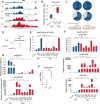
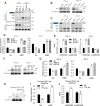

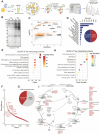
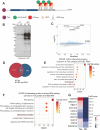

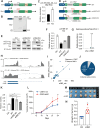

Similar articles
-
YTHDF1 and YTHDC1 m6A reader proteins regulate HTLV-1 tax and hbz activity.J Virol. 2025 Mar 18;99(3):e0206324. doi: 10.1128/jvi.02063-24. Epub 2025 Feb 4. J Virol. 2025. PMID: 39902961 Free PMC article.
-
In vivo antagonistic role of the Human T-Cell Leukemia Virus Type 1 regulatory proteins Tax and HBZ.PLoS Pathog. 2021 Jan 20;17(1):e1009219. doi: 10.1371/journal.ppat.1009219. eCollection 2021 Jan. PLoS Pathog. 2021. PMID: 33471856 Free PMC article.
-
Novel Interactions between the Human T-Cell Leukemia Virus Type 1 Antisense Protein HBZ and the SWI/SNF Chromatin Remodeling Family: Implications for Viral Life Cycle.J Virol. 2019 Jul 30;93(16):e00412-19. doi: 10.1128/JVI.00412-19. Print 2019 Aug 15. J Virol. 2019. PMID: 31142665 Free PMC article.
-
Adult T-cell leukemia-lymphoma as a viral disease: Subtypes based on viral aspects.Cancer Sci. 2021 May;112(5):1688-1694. doi: 10.1111/cas.14869. Epub 2021 Mar 30. Cancer Sci. 2021. PMID: 33630351 Free PMC article. Review.
-
HTLV-1 Infection and Adult T-Cell Leukemia/Lymphoma-A Tale of Two Proteins: Tax and HBZ.Viruses. 2016 Jun 16;8(6):161. doi: 10.3390/v8060161. Viruses. 2016. PMID: 27322308 Free PMC article. Review.
References
MeSH terms
Substances
LinkOut - more resources
Full Text Sources
Research Materials
Miscellaneous

